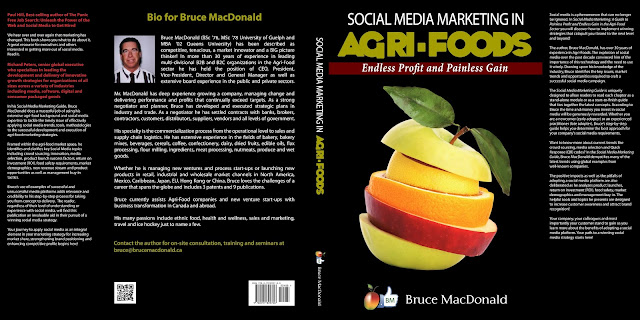SCIENCE BEHIND FEEDING A GROWING POPULATION
Posted in News, Fats/Oils, Fat Reduction, Saturated Fats, Trans Fats, Agriculture, Proteins, Beef,Chicken, Pork, Canola, Soy, Sunflower, Oilseeds, Omega-9, Fatty Acids, Cholesterol, Healthy, Healthy Foods, Nutrition, Diet, Sustainability, Heart Health, Cardiovascular, Grains, Grains / Pasta / Tuber
INDIANAPOLIS—The diets of people in North America shed almost 1.5 billion pounds of unhealthy saturated and trans fat over the last six years thanks to a new phase in an ongoing agricultural revolution, according to new research presented at the National Meeting & Exposition of the American Chemical Society (ACS).
In an interview before his keynote address at the, Daniel Kittle, vice president for research and development at Dow AgroSciences, cited the development of healthier foods as one part of the role science has played in supporting the growth of civilization through advances in agricultural technology.
“We’ve used advanced breeding to produce canola, soybean and sunflower plants that are lower in saturated fats, the bad fats linked to heart disease, and high in the healthier monounsaturated fats," Kittle said. "Reduced saturated fats, increased amounts of healthful omega-9 fats and the elimination oftrans fats should translate to lower cholesterol levels and a reduced risk of developing heart disease and diabetes, which already affect millions of Americans."
The mission of agricultural science is to supply abundant and nourishing food for a global population that is projected to reach 9 billion by 2050, he said, adding food must be grown sustainably to meet the expectations of millions of people in developing countries who are moving into the middle class in countries like the People’s Republic of China.
Other factors such as climate change and soil erosion may reduce the amount of prime land available for food production. Insects, weeds and diseases are evolving to resist traditional ways of keeping them in check.
Kittle expressed confidence, however, that scientists and farmers working together will meet those challenges in the years ahead, as they have in the past. He cited progress in developing crops with higher yields and greater resistance to pests and drought.
Industry-wide efforts have increased crop productivity by 20% to 50%, which keeps food costs down and provides jobs, Kittle said. In addition, integrated pest management programs help decrease energy consumption and environmental impact by using the right products at the right times to reduce pest populations and minimize the impact on other insects and animals.
“Scholars have predicted for centuries that the earth will reach a tipping point where population growth will outstrip our ability to sustain ourselves. But far from a story of doom and gloom, the agrichemical story is one of innovation, adaptation and determination," he said. “We have a huge challenge ahead of us, and our scientists are prepared to meet it."
In an interview before his keynote address at the, Daniel Kittle, vice president for research and development at Dow AgroSciences, cited the development of healthier foods as one part of the role science has played in supporting the growth of civilization through advances in agricultural technology.
“We’ve used advanced breeding to produce canola, soybean and sunflower plants that are lower in saturated fats, the bad fats linked to heart disease, and high in the healthier monounsaturated fats," Kittle said. "Reduced saturated fats, increased amounts of healthful omega-9 fats and the elimination oftrans fats should translate to lower cholesterol levels and a reduced risk of developing heart disease and diabetes, which already affect millions of Americans."
The mission of agricultural science is to supply abundant and nourishing food for a global population that is projected to reach 9 billion by 2050, he said, adding food must be grown sustainably to meet the expectations of millions of people in developing countries who are moving into the middle class in countries like the People’s Republic of China.
Other factors such as climate change and soil erosion may reduce the amount of prime land available for food production. Insects, weeds and diseases are evolving to resist traditional ways of keeping them in check.
Kittle expressed confidence, however, that scientists and farmers working together will meet those challenges in the years ahead, as they have in the past. He cited progress in developing crops with higher yields and greater resistance to pests and drought.
Industry-wide efforts have increased crop productivity by 20% to 50%, which keeps food costs down and provides jobs, Kittle said. In addition, integrated pest management programs help decrease energy consumption and environmental impact by using the right products at the right times to reduce pest populations and minimize the impact on other insects and animals.
“Scholars have predicted for centuries that the earth will reach a tipping point where population growth will outstrip our ability to sustain ourselves. But far from a story of doom and gloom, the agrichemical story is one of innovation, adaptation and determination," he said. “We have a huge challenge ahead of us, and our scientists are prepared to meet it."
Sources:
Check out my latest e-book entitled: "Social Media Marketing in Agri-Foods: Endless Profit and Painless Gain"
The book is available on Amazon and Kindle for $4.99 USD. Visit amazon/Kindle to order now:
http://www.amazon.ca/Social-Media-Marketing-Agri-Foods-ebook/dp/B00C42OB3E/ref=sr_1_1?s=digital-text&ie=UTF8&qid=1364756966&sr=1-1
Thanks for taking the time!


No comments:
Post a Comment